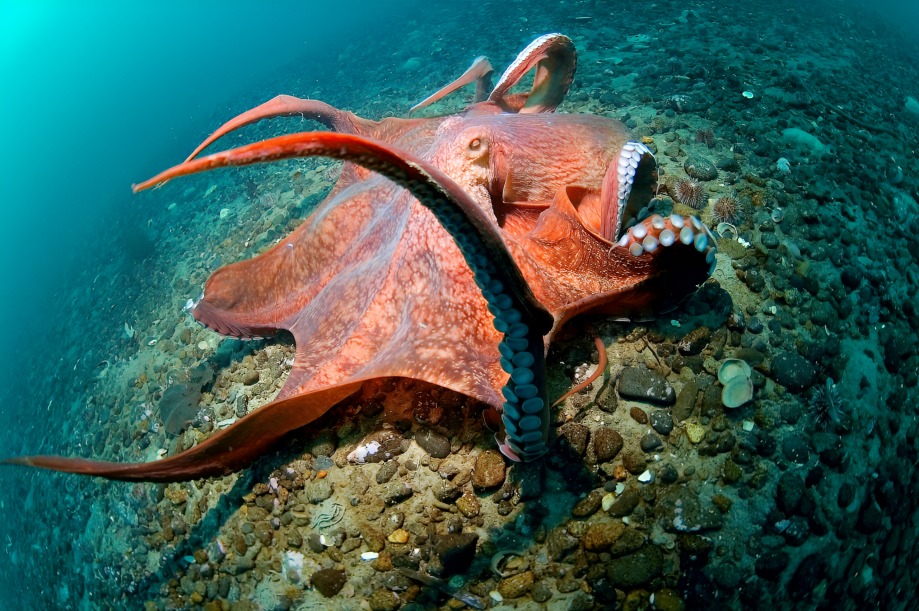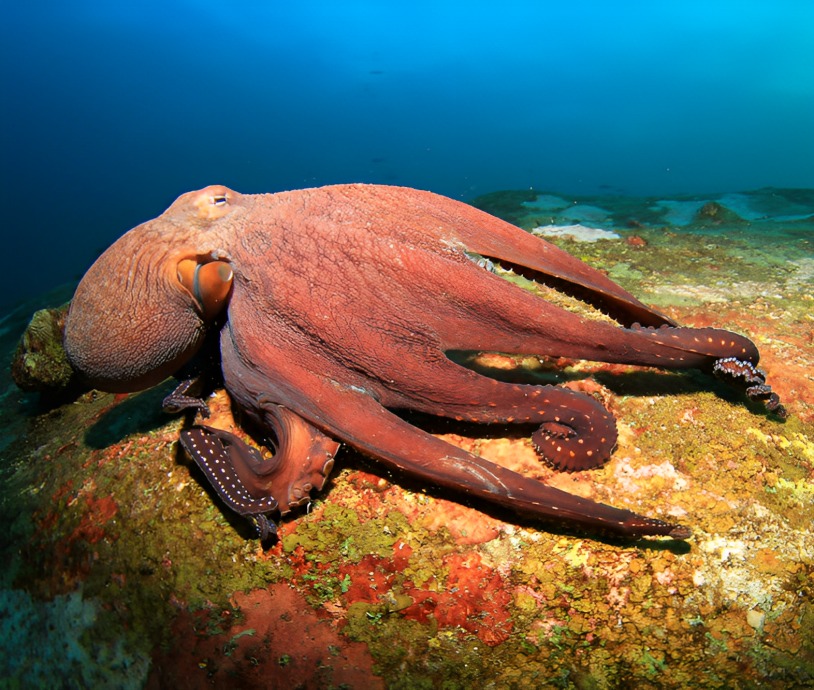One of the largest species of the octopus is the Giant Pacific Octopus. It can be found in the North Pacific Ocean from California to Alaska and across Japan. Giant Pacific octopuses are recognized for their impressive size. Their length is up to 16 feet and their weight is up to 110 pounds.
Giant Pacific octopuses are adaptable and intelligent. They can change their color and texture so that they can blend in with the surroundings which makes them good at evading predators. Giant Pacific octopuses feed on marine animals that include crabs, fish, and clams.
Life Span Of Giant Pacific Octopus
Giant Pacific Octopuses only live for 3 to 5 years, which is a somewhat limited lifespan. They reproduce at that time, with females producing up to 100,000 eggs in a single clutch. The female will tend to the eggs until they hatch, usually laying them in a safe spot like a crack or behind a rock.
Giant Pacific Octopuses face threats from human activities like poaching, overfishing, and habitat destruction despite their enormous size and intellect. To preserve this unique and significant “рeсe,” conservation initiatives are currently under progress.
Habitat Details Of Giant Pacific Octopus
From the coasts of Korea and Japan to Canada, the United States, and Mexico, the enormous Pacific octopus can be found all throughout the Pacific. It can be found in shallow water and at depths of up to 4900 feet (1500 m) in the frigid Pacific waters, where the temperature is at least 60 degrees Fahrenheit. If you’re fortunate and have exceptionally keen eyes, you might spot one in a tide pool. It is a lonely creature that lives alone for the majority of its time.

Diet, Beak, And Mouth Details Of Giant Pacific Octopus
A mature giant Pacific octopus is a stealthy predator that prefers crustaceans like crabs, clams, and other mollusks to other types of seafood. The enormous Pacific octopus uses its eight arms’ firm grip, jet propulsion, and camouflage to catch victims off guard. The octopus can then go back to its rocky den and have a leisurely lunch there.
An octopus utilizes three distinct methods inside its den to penetrate its hard-shelled prey. It may “drill” through the shell of its hard-shelled prey, pull the prey apart, or bite it open with its beak. Drilling is used on difficult-to-pull-apart or bite-open prey. The octopus’s saliva secretions soften the shell. The octopus uses its radula, a rough, hard tongue, to scrape away the softened substance and make a tiny hole. Through this opening, the octopus releases a toxin that paralyzes its target and starts to break down the connective tissue of the animal. The prey can then be dissected and eaten.
Reproduction Of Giant Pacific Octopus
The metabolic processes are also accelerated by warmer waters. The octopus eggs develop and hatch more quickly the warmer the water is. The paralarvae swim to the surface to join the other plankton after hatching, where they are frequently eaten by birds, fish, and other plankton eaters. A quicker hatching period might also alter when food is most readily available. According to one study, hotter water speeds up every stage of reproduction and can even reduce longevity by 20%. Other findings support the hypothesis that greater embryo and paralarvae mortalities are expected under warming climate scenarios.

